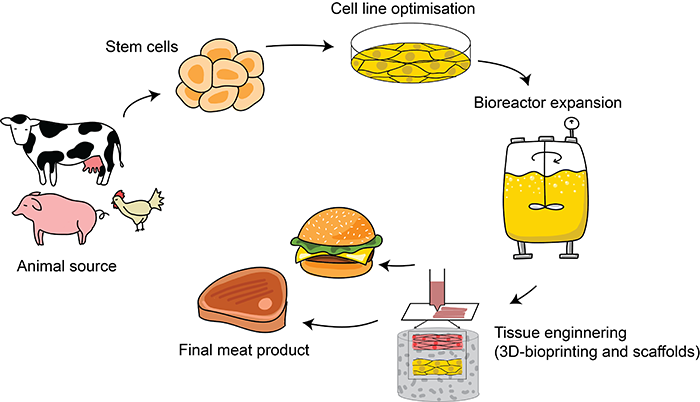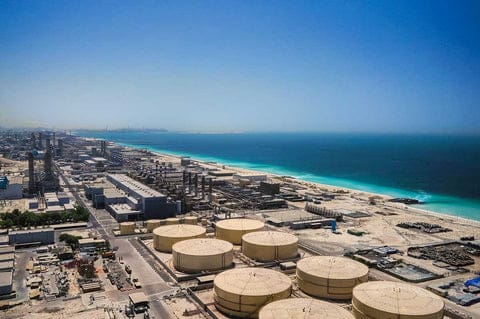Hydrogen-Ready Turbines - Revolutionizing Energy Production

The Rise of Hydrogen-Ready Turbines

Imagine a world where power generation doesn't have to mean massive carbon emissions. Sounds like a pipe dream, right? Well, with hydrogen-ready turbines, that future is already taking shape. Companies like GE Vernova are leading the charge, and their tech is pretty impressive.
Real-World Experience with Hydrogen
GE Vernova's hydrogen-ready turbines have been around the block a few times. They've been operating on fuels with hydrogen content ranging from as low as 5% to a whopping 100%. That's right, these turbines can run on pure hydrogen if needed. With over 120 gas turbines supporting power generation with hydrogen and associated fuels worldwide, they've got some serious street cred.
Flexibility is Key
One of the best things about hydrogen-ready turbines is their flexibility. They can be configured to operate on green hydrogen or similar fuels right out of the box. Or, if you've already got a traditional fuel setup, you can upgrade to hydrogen-ready after years of service. Talk about future-proofing your energy production.
What This Means for the Future
As the world continues to transition to cleaner energy sources, hydrogen-ready turbines are poised to play a major role. With their ability to adapt to different fuel types and reduce carbon emissions, they're an attractive option for power generation. Here are some benefits of hydrogen-ready turbines:
- Can operate on a wide range of hydrogen blends
- Over 120 units already in operation worldwide
- Can be configured for green hydrogen or upgraded later
It's an exciting time for energy production, and hydrogen-ready turbines are leading the way.
Benefits of Hydrogen-Ready Turbines
Imagine a world where power plants can significantly reduce their carbon footprint without sacrificing reliability or efficiency. That's exactly what hydrogen-ready turbines promise to deliver. These innovative systems can slash carbon emissions and support the transition to a lower-carbon future.
One of the biggest advantages of hydrogen-ready turbines is their flexibility. They can operate on a wide range of hydrogen concentrations, making them a reliable source of energy. This means power plants can gradually transition to cleaner energy sources without having to completely overhaul their existing infrastructure.
GE Vernova's hydrogen combustion technology is a great example of this innovation in action. Their technology allows power plants to decarbonize their existing gas turbines by implementing system modifications. This approach can significantly reduce the costs and complexity associated with transitioning to cleaner energy sources.
Key Benefits
- Significantly reduce carbon emissions and support a lower-carbon future
- Offer a flexible and reliable source of energy
- Can operate on a wide range of hydrogen concentrations
By leveraging hydrogen-ready turbines, power plants can take a significant step towards reducing their environmental impact. With the ability to operate on a wide range of hydrogen concentrations, these systems provide a flexible and reliable source of energy. As the world continues to transition towards cleaner energy sources, hydrogen-ready turbines are poised to play a critical role in the journey.
How Hydrogen-Ready Turbines Work

Imagine a power plant that can run on hydrogen, producing electricity with minimal environmental impact. Sounds like science fiction, right? But with GE Vernova's hydrogen-ready turbines, this is becoming a reality.
Hydrogen is a highly flammable gas, which requires special safety considerations for storage and use. To address this challenge, GE Vernova's turbines are designed with safety features such as gas turbine enclosure and ventilation systems. These systems ensure that the turbines operate safely and efficiently, even when running on hydrogen.
Safety Features of Hydrogen-Ready Turbines
The gas turbine enclosure is a critical component of the safety system, designed to prevent hydrogen leaks and minimize the risk of explosion. The ventilation system provides additional protection by removing any accumulated hydrogen from the turbine area.
Some key features of GE Vernova's hydrogen-ready turbines include:
- Gas turbine enclosure
- Ventilation systems
GE Vernova also provides engineering services and upgrades to support the integration of hydrogen-ready turbines. Their team works closely with power plant operators to ensure a smooth transition to hydrogen power. With their expertise, power plants can reduce their carbon footprint and contribute to a cleaner energy future.
The Future of Hydrogen-Ready Turbines
The world is on the cusp of a hydrogen revolution, and GE Vernova is leading the charge. They're not just dipping their toes in the water; they're fully invested in developing gas turbines that can run on hydrogen. This isn't just about reducing carbon emissions – it's about creating a more sustainable energy future.
So, what's the big deal about hydrogen-ready turbines? For starters, they can significantly reduce greenhouse gas emissions from power generation. GE Vernova is working tirelessly to increase the hydrogen capability of its gas turbines through in-house research and development, as well as rigorous testing. They're not alone in this pursuit, though. The company is actively participating in US Department of Energy hydrogen fuel programs to ensure the safe and reliable operation of these turbines.
The demand for hydrogen-ready turbines is expected to skyrocket as the world transitions to a lower-carbon energy mix. Some key drivers behind this growth include:
- Government incentives and policies supporting low-carbon technologies
- Increasing investment in hydrogen infrastructure
- Growing demand for cleaner energy solutions
With GE Vernova at the helm, the future of hydrogen-ready turbines looks bright. As the energy landscape continues to evolve, one thing is clear: hydrogen will play a major role in shaping our planet's future. And with companies like GE Vernova pushing the boundaries of innovation, we're one step closer to a cleaner, greener tomorrow.
Challenges and Opportunities

As the world shifts towards cleaner energy sources, hydrogen-ready turbines are emerging as a game-changer - but they're not without their hurdles. One of the biggest challenges is the cost of hydrogen production, which can vary wildly depending on the method used. For instance, producing hydrogen from renewable energy sources like solar or wind power can be more expensive than traditional fossil fuel-based methods.
Estimating Resources and Opportunities
So, how can companies navigate these complexities? GE Vernova's got a handy tool for that. Their calculator helps estimate the resources required for hydrogen-fueled gas turbines, giving businesses a better sense of the opportunities and challenges ahead. It's a great starting point for those looking to make the switch.
Let's break it down further. When it comes to hydrogen-ready turbines, there are several key considerations:
- Safety: Ensuring the safe handling and storage of hydrogen is crucial.
- Infrastructure: Building out the necessary infrastructure to support hydrogen production and transportation is a significant undertaking.
- Policy: Governments and regulatory bodies need to create supportive policies to encourage the adoption of hydrogen-ready turbines.
GE Vernova is working hard to address these challenges and unlock the full potential of hydrogen-ready turbines. With the right tools and partnerships, companies can start to make meaningful progress towards a cleaner energy future.
Real-World Applications
Hydrogen-ready turbines are shaking up the energy landscape, and their potential applications are vast. Imagine powering entire cities with clean energy, or fueling industrial processes without the hefty carbon footprint.
These turbines aren't just conceptual - they're being put to work in various industries, including power generation, cement, and chemicals. GE Vernova, a leading energy tech company, has hands-on experience integrating hydrogen-ready turbines into customer operations. They're helping industries like these cut carbon emissions and move towards a lower-carbon future.
Industries Leading the Charge
- Power generation: Hydrogen-ready turbines can help utilities transition to cleaner energy mixes.
- Cement: A notoriously hard-to-abate industry, cement production can benefit from hydrogen's low-carbon potential.
- Chemicals: Hydrogen can replace fossil fuels in various chemical processes, reducing emissions.
By embracing hydrogen-ready turbines, these industries can make significant strides in reducing their environmental impact. It's a win-win for businesses and the planet - and we're already seeing it happen.
Conclusion

As the world shifts towards a lower-carbon energy mix, hydrogen-ready turbines are stepping up to play a crucial role. GE Vernova is at the forefront of this transition, developing and deploying turbines that can run on a mix of natural gas and hydrogen.
Leading the Charge
GE Vernova's hydrogen-ready turbines are more than just a concept - they're a reality that's already making an impact. With over 100 hydrogen-capable gas turbines ordered or operating worldwide, the company is well on its way to helping reduce carbon emissions. Take, for instance, the company's work with utility companies to retrofit existing plants to run on hydrogen blends.
What This Means for the Future
So, what does this mean for our energy future? For starters, it means we're one step closer to reducing our reliance on fossil fuels. Hydrogen-ready turbines can support a sustainable energy mix by:
- Reducing carbon emissions
- Enabling the use of renewable energy sources
- Providing a flexible and efficient power generation solution
GE Vernova's commitment to innovation and sustainability is driving real change in the energy sector. As the demand for cleaner energy solutions continues to grow, companies like GE Vernova are poised to meet that demand.

















Comments ()